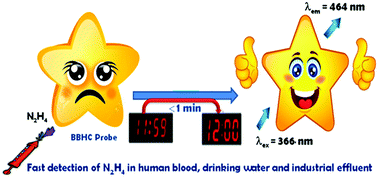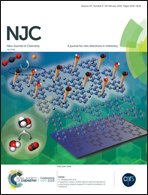A smart sensor for rapid detection of lethal hydrazine in human blood and drinking water†
Abstract
Hydrazine exposure leads to damage of all vital organs of humans and animals, which demands the discovery of a method for the rapid and quantitative detection of hydrazine. Newly designed and synthesized receptor-bearing phenolic –OH, –Br, –CN, –ester and benzthiazole moieties displayed brilliant naked eye fluorescence sensing towards hydrazine with rapid reactivity and very good selectivity over several cation-, anion-, thiol- and amine-containing compounds. The probe showed good cell permeability, low cytotoxicity, fast fluorogenic recognition and “naked eye” detection of hydrazine below the TLV levels, in living cells, drinking water and industrial effluents.



 Please wait while we load your content...
Please wait while we load your content...